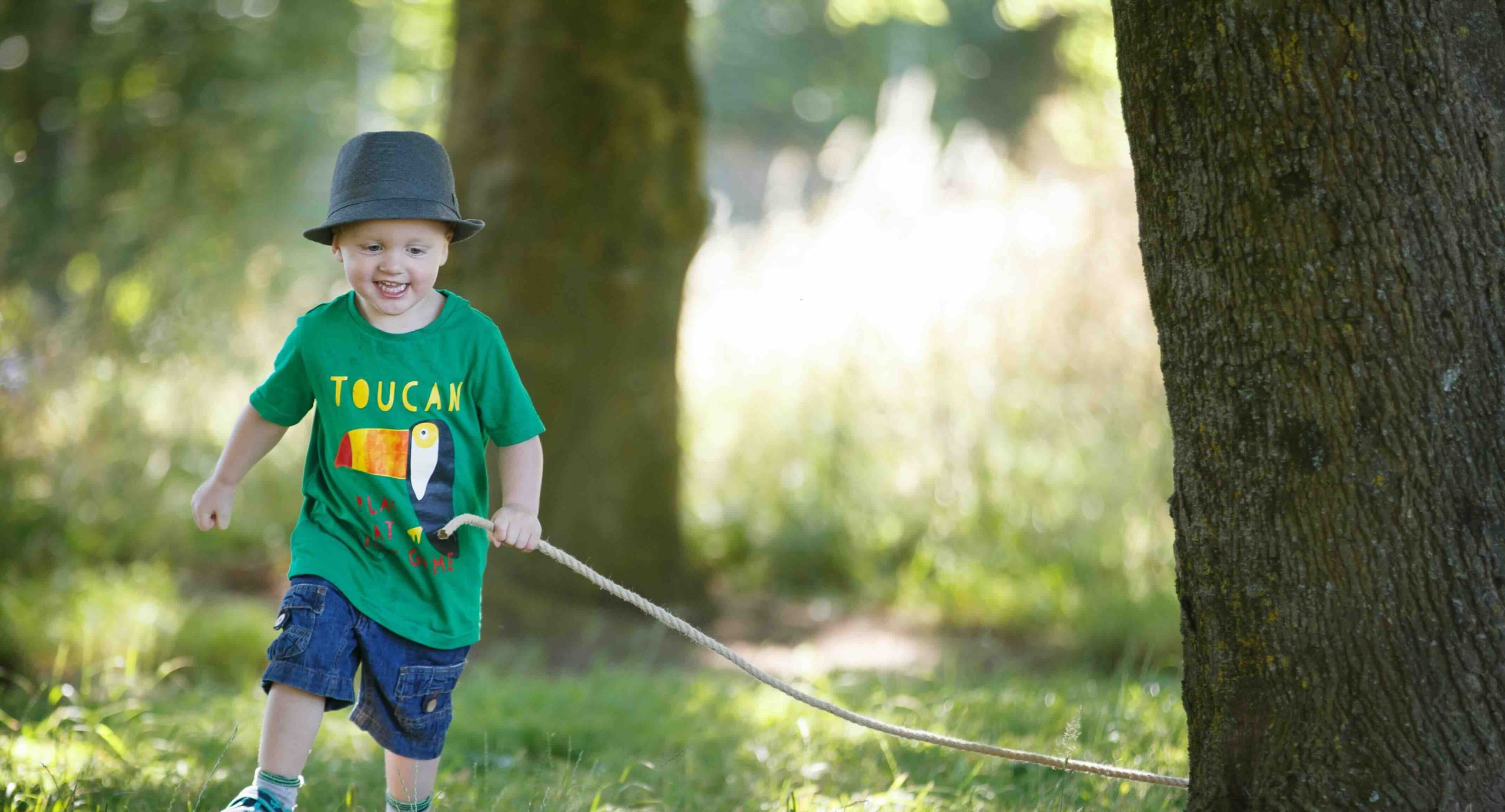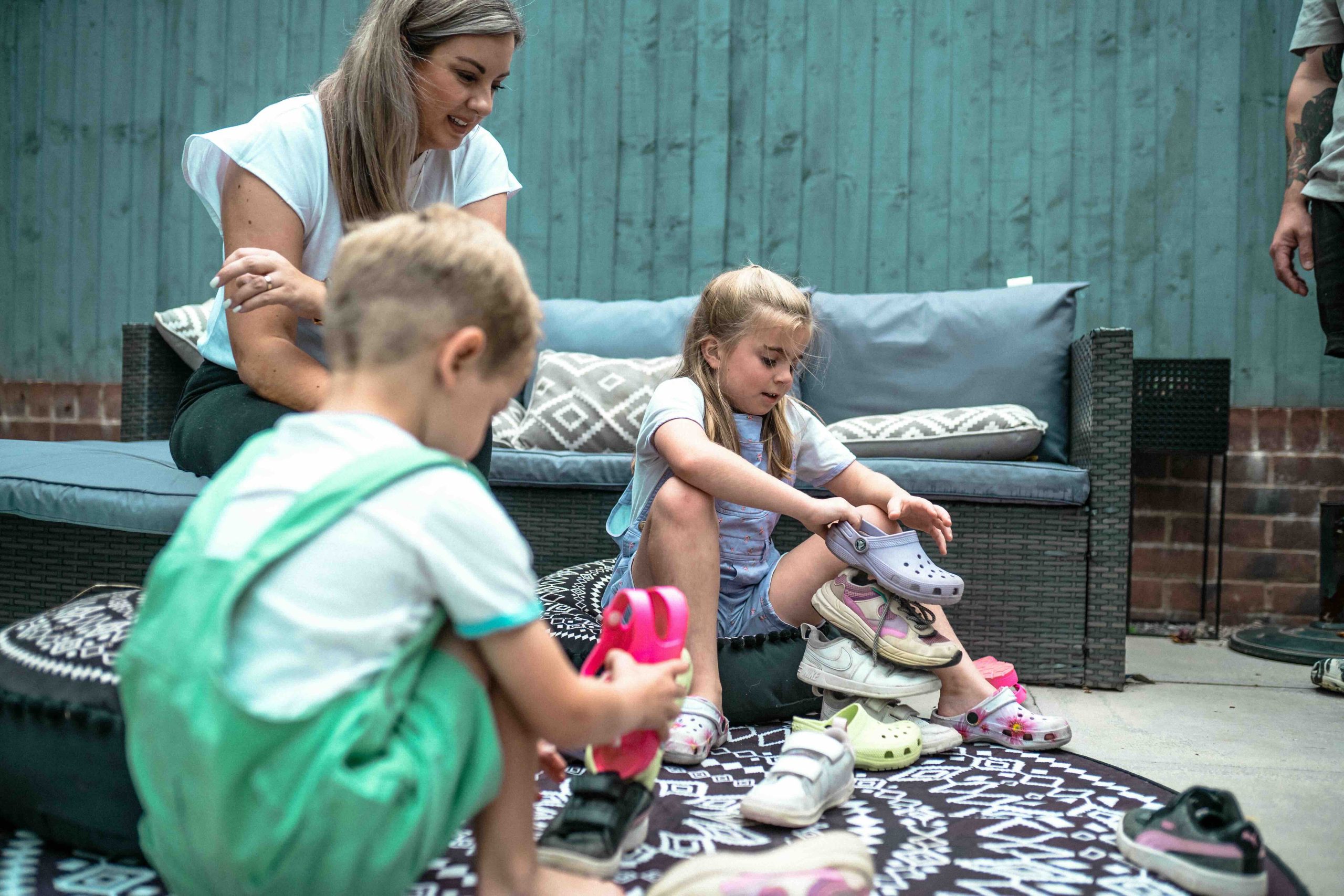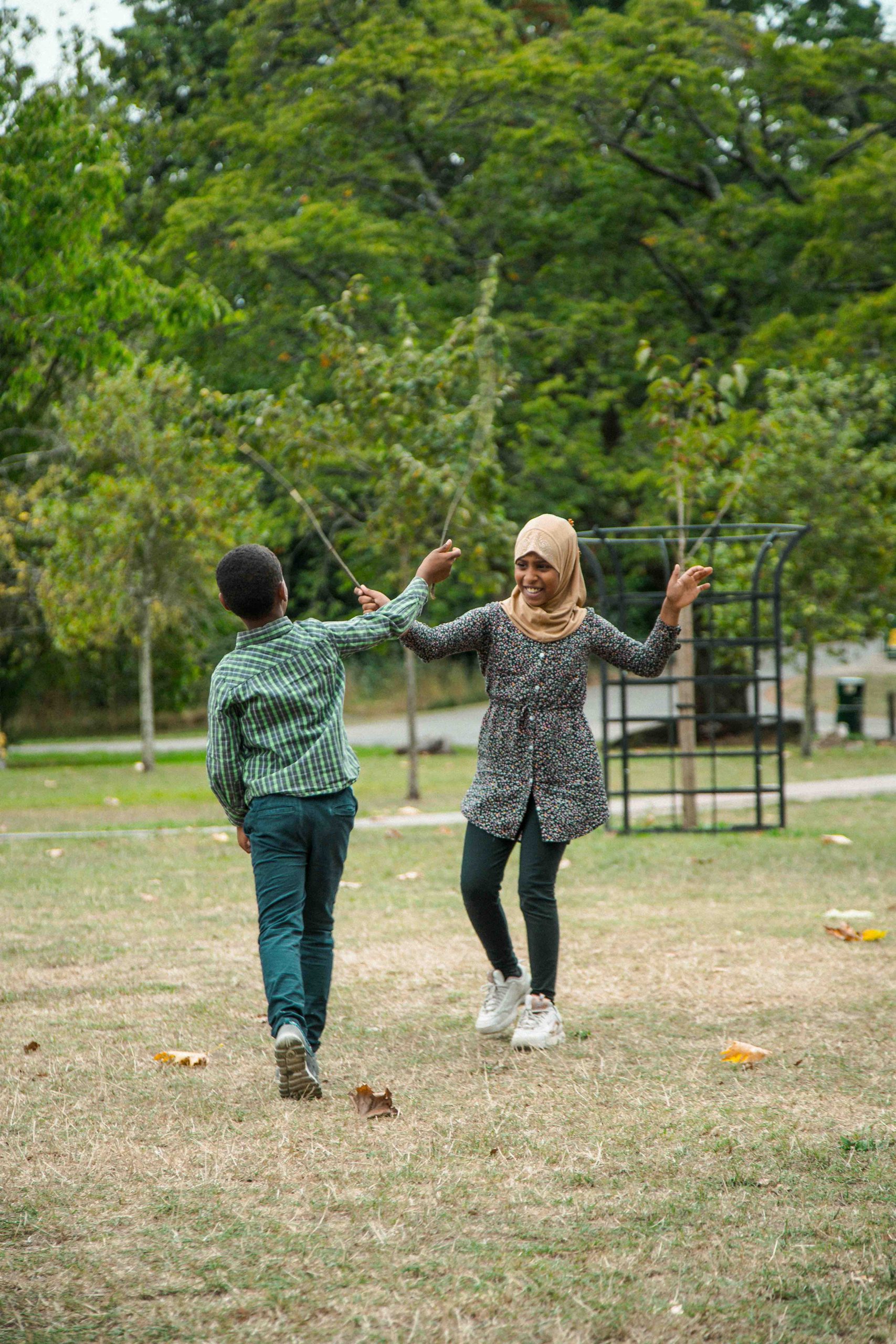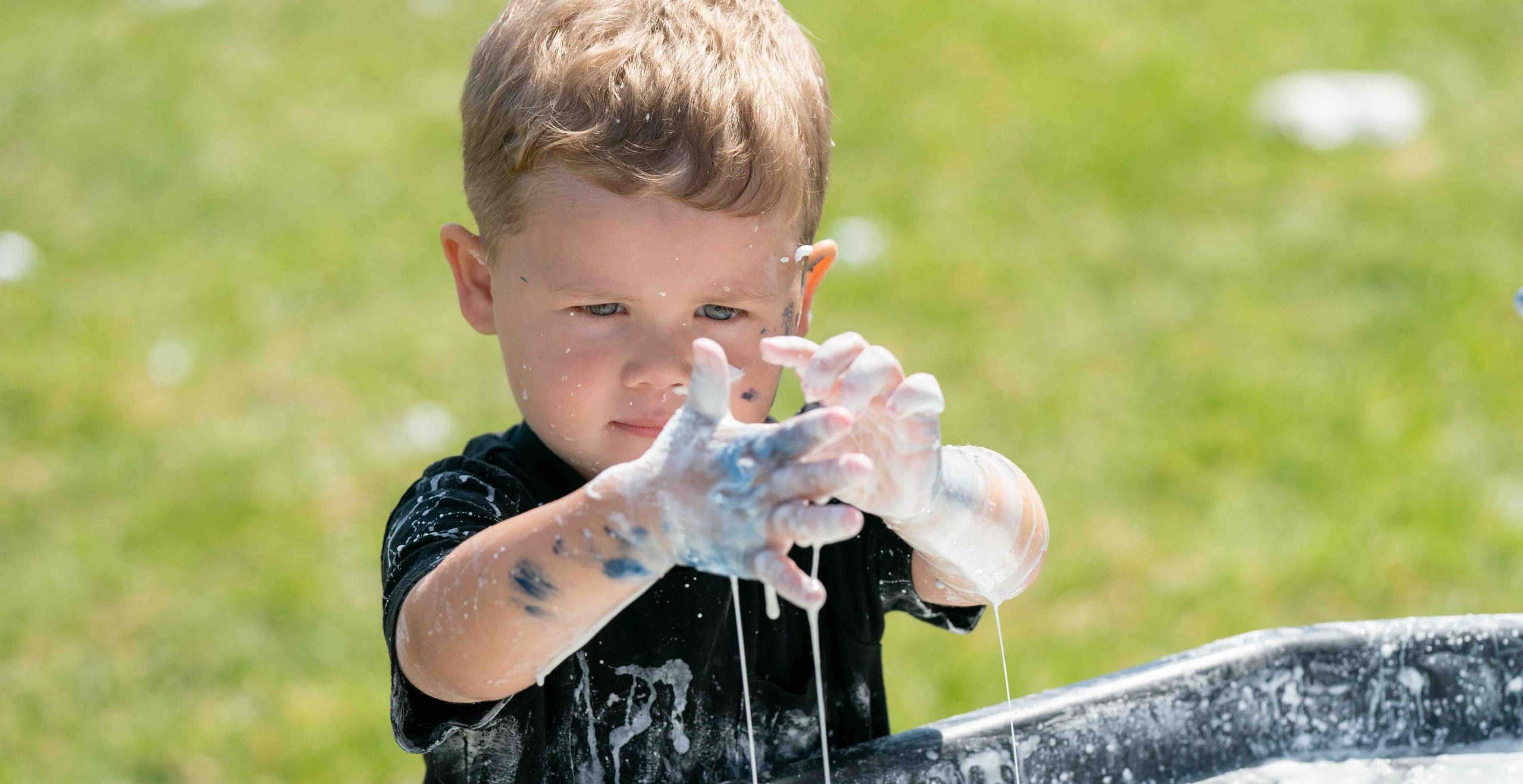Play Ideas
Everyday play adventures
Encourage your child to play outside
Every child benefits from the opportunity to play outdoors. You don’t have to spend money on expensive activities or travel miles to a particular playground - everybody can provide low-cost opportunities in their own communities. Here are a few simple ideas to help you make play part of your daily routine:
Make the journey fun
If you’re going out locally, leave the car at home and play as you walk. Take roller skates, scooters or skateboards. Think of games you can play on the way. Your child is more likely to play if they are with friends, so, why not invite friends along, too.
Make the most of what’s around
Children naturally play wherever they are – they don’t always need a playground. Everyone’s community is different but there will be playable space in your area. If you live on the coast, build sandcastles on the beach. If you live near a park, take a picnic or climb a tree. If you have a garden, build a den there.
Get outside whatever the weather
Your child will want to play whatever the weather, so don’t be put off going out because it’s raining. Be prepared: put on wellies and raincoats, take umbrellas, and get ready for some puddle jumping!
Offer active toys
Traditional toys like hula hoops, skipping ropes and space hoppers are still popular with children. They’re ideal for playing in the garden, or outside on the pavement close to your home.
Encourage adventures
Children need to have adventures outdoors, even if it means a few scrapes and grazes. Let your child enjoy physical challenges such as climbing trees. Children learn through taking risks, so don’t be overly protective if the worst that can happen is a bump or a scrape.
Share your memories
Think about the kinds of active games you used to play when you were a child – tag, rounders, piggy in the middle. Tell your child about the games you used to play and play them together. Grandparents might want to get involved, too, sharing the games they played when they were young.
Lead by example
Don’t be afraid to get stuck in and play outdoors with your child. You’re never too old to play, and playing active games is a fun way of making exercise part of your daily routine.
Build a sense of community
Get together with other parents and neighbours to provide a safe space for children to play outdoors. This could be the lanes between houses, a green patch at the end of your street or your local park. Children can bring their scooters, footballs, skipping ropes, chalk ... and adults can bring their cups of tea!
Make your home a great place to play
Your home is a great place for playing, particularly when the weather is stormy or it’s too dark to be out. If your child has the freedom to play – with friends, toys or just bits and pieces – they will make creative use of even a small space like the corner of a room.
Lots of fun ideas don’t need too much room – for example, old favourites like hide and seek or building a den out of cushions and blankets. Whatever their age, your child needs space to play inside. Rough and tumble is an important part of how children play, so try to make this possible at home.
Ordinary things around your home can be used for play:
- Cushions make great stepping stones
- A blanket over a table makes an instant den
- Empty cardboard boxes can be made into cars, castles or even spaceships.
Try turning everyday tasks into games and challenges. For example, who can pick the most weeds from the lawn (and find worms at the same time)?













